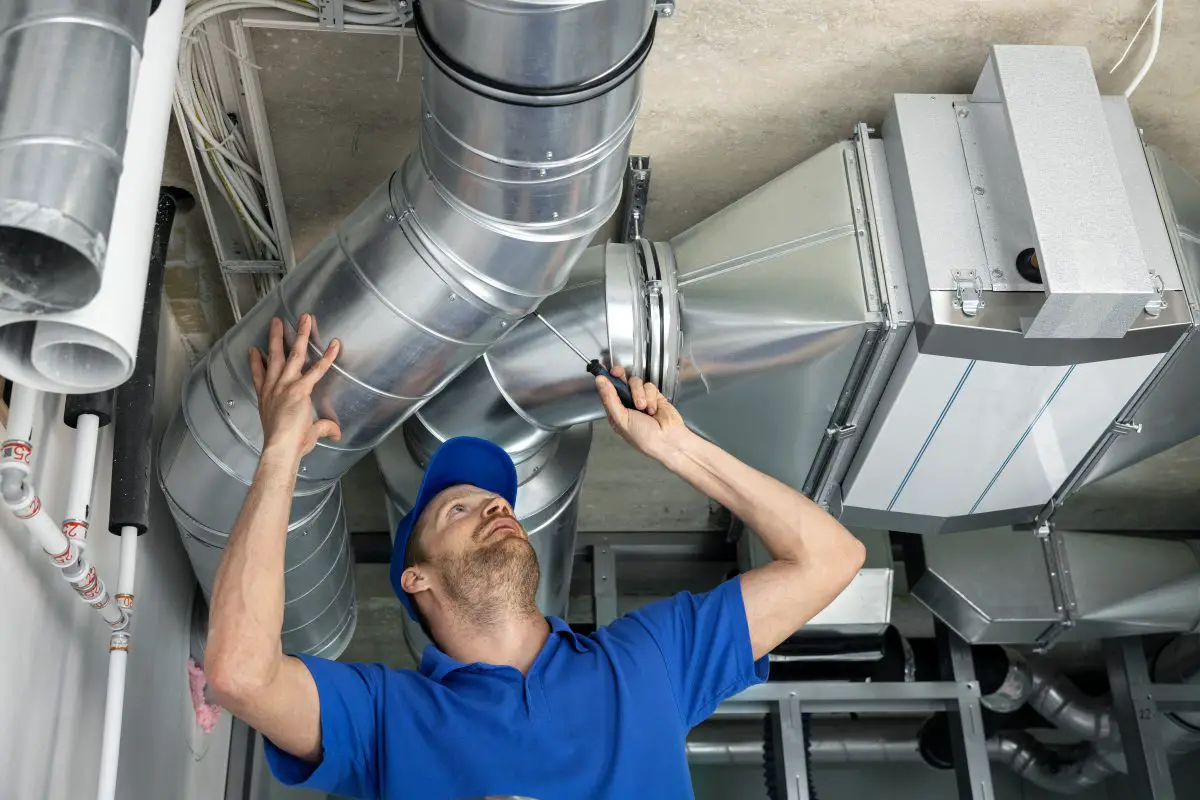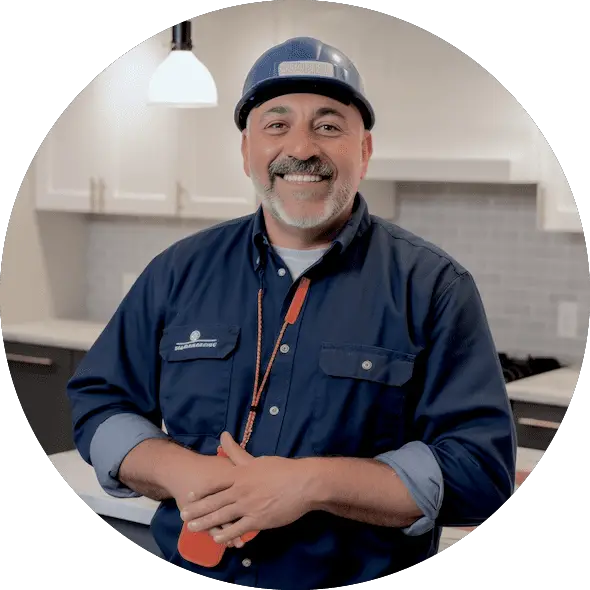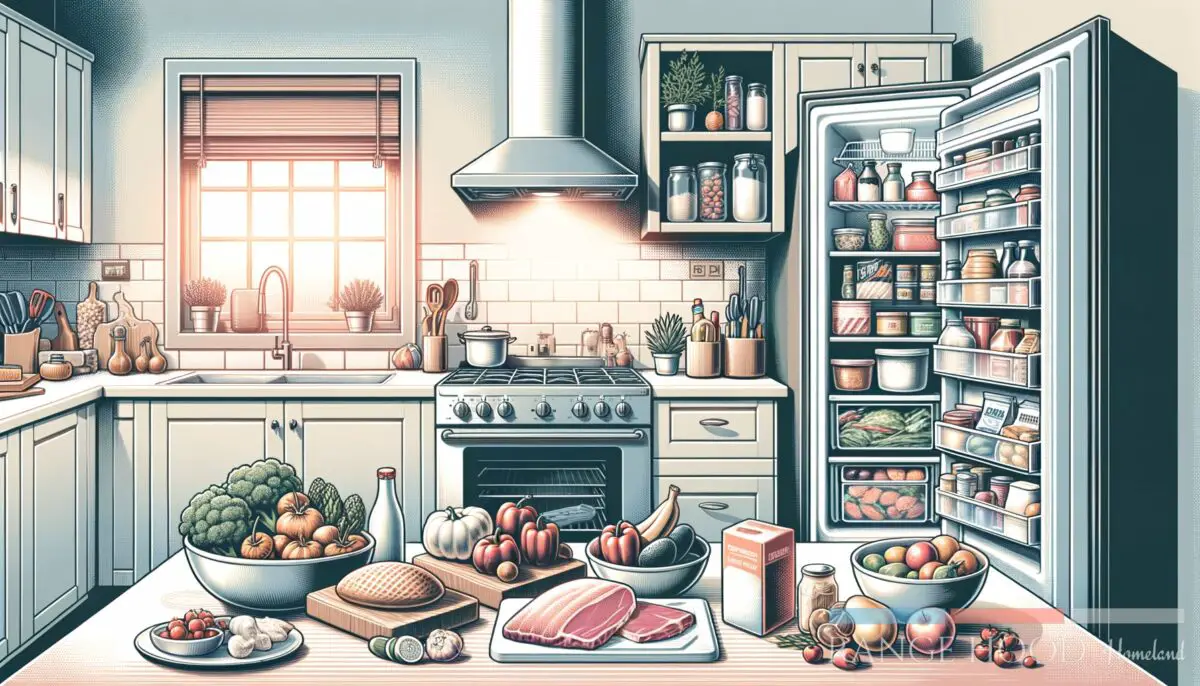Ducted range hoods are some of the best and most powerful range hoods. But they require ductwork. So, if you’re considering installing a vented (or ducted) range hood in your kitchen, you’ll need to be familiar with ducting. Ducting is a necessary part of installing a range hood, and it’s an important topic to know if you want to avoid any problems down the road.
In this article, we’ll explain what ducting is, how it works, and some of its benefits.
Ductwork is a system of ducts and fittings that carries air, water, or steam in a controlled manner. It’s used in commercial and residential buildings to distribute these gases and liquids, and it’s the primary part of the HVAC ventilation system.
What’s an air duct?
HVAC ductwork, or AC ducts are installed to heat and cool each room. The HVAC system, which is connected to the house’s air ducts, is in charge of sending conditioned air to every room. The air ducts are part of your home’s HVAC system, which keeps your family comfortable all year.

If you want to keep your family cool in the summer and warm in the winter, check out this high-tech thermostat.
[azonpress template=”box” asin=”B0131RG6VK”]
COSMO COS-63190S Wall Mount Range Hood

COSMO COS-63190S Wall Mount Range Hood
Types of air ducts?
We’ll examine the materials used to construct an air duct.
Sheet metal duct
Air ducts are often made of galvanized steel or aluminum and come in various shapes and sizes, including the rectangular ones. Mechanical ventilation ducts made of sheet metal are the most reliable and mold-free option. In addition, metal air ducts are rustproof, especially galvanized steel with zinc coating.
Fiberboard duct
This kind of duct keeps air and moisture out by being wrapped in foil and filled with compressed inorganic fiberglass glued together with resin. This type of air duct is the most common since it is inexpensive, effective at blocking out noise, and often insulated.
Don’t try to clean ducting made of old fiberboard. Instead, it needs to be replaced. Fiberglass fibers are released into the air when the surface is broken and spread throughout the house.
Flex duct
Flexible ducts are made of spiral steel wire wrapped in a flexible plastic polymer and insulated on top. This ducting is a good option since it’s cheap, lightweight, and simple. Flex ducts win with flying colors when more conventional ducting would not work.
What are your HVAC ductwork’s main parts, and how do they work
Your HVAC system consists of several individual HVAC duct components. To briefly summarize, below are some of the key elements:
Ducts (pipes and trunks)
Several parts go into making the duct pipes and trunks in your house. In their simplest form, duct pipes and trunks are the primary conduits that link the air handler to the rest of the house and carry the heated or cooled air throughout the building. The duct pipes branch out from the main duct trunk and travel to each room.
Galvanized steel is used for these trunks and pipes, but flexible aluminum can be used if your walls need something more flexible.
Aside from the main trunk and the individual pipes, several branch ducts send air to different rooms. Air may be forced vertically through a thin wall using a stack, which is a tall, thin, vertical duct pipe. The termination point of a duct pipe is called a “stack head.”
Duct transitions
If you want your HVAC system to function properly, the ducts will need to be linked in a way that considers your house’s layout. Sadly, HVAC systems don’t come in a cookie-cutter form, so duct transitions are required to join duct trunks and pipes.
Angled boots may be used at the ends of duct trunks and pipes in addition to take-offs, turning vanes, cleats, and other specialty connections. Together, they form channels that allow fresh air to circulate throughout your house.
Refrigerant lines
The compressors in an HVAC system get refrigerant via the system’s refrigerant lines. Using this refrigerant, your HVAC system may either chill or heat the air in your home.
Air handler
The air handler may also be the HVAC system’s blower fan and filter. The duct system is kept moving by a blower fan. Heating and cooling coils may be a part of the air handler.
Drain pans and lines
Air conditioning and heating (HVAC) systems not only heat and chill the air but also remove moisture from it. Because condensation can happen inside the system, it makes sense to have drain pans. They use the plumbing outside your house to eliminate the condensation that forms when the air inside your home is heated or cooled. Ductwork drain pans prevent corrosion and mold from spreading throughout your property.
Plenum
The ducts all go to a big storage area called a plenum, which is part of the HVAC system. Most HVAC systems have two main pieces of ductwork: the supply plenum and the return plenum. The supply plenum will be occupied by conditioned air from the HVAC system. When this conditioned air is introduced into a space, the air already there is forced out via the vents and into another system.
These ducts carry the recirculated air to the plenum. Either hot or cold air is sent outside through a chimney or filtered and sent back through the system.
Flues
Vents, or flues, release air to the outside. They are often found in ventilation, heating, and air-conditioning (HVAC) systems. The flues carry these gases outside. For instance, if your return plenum does not reuse the air exhausted from the space, you may need to use a flue to release the air outdoors.
Signs your ductwork is bad
The National Comfort Institute says that air duct problems mean that the average HVAC system can only do 57% of what it was designed to do. Below are some signs that your ductwork is bad.
1. Hot & cold spots
The ultimate indicator of air duct problems is random shifts in temperature. For example, when you walk into a room or down a flight of stairs, the temperature changes by more than three degrees. Confirm this with a thermometer if you like. After you figure out why the temperature is different, you should call an HVAC technician.
2. Loud noise
What’s that, you say? Doesn’t the HVAC system make noise while it’s on? Yes, but you shouldn’t let the noise bother you. If you hear loud rattling or whistling, it’s likely due to air ducts that are loose, disconnected, or broken. Ignoring it, the situation will only get worse.
3. Low indoor air quality
There are two obvious warnings that the air quality is poor. Heavy amounts of dust in your home. And everyone seems to be sneezing. Dust and pollen may enter your house via ductwork cracks or faulty connections.
4. Little or no airflow from the supply vent
If you want to be sure, just put a piece of paper in front of the supply hole. In the absence of a limbo-like paper bending, airflow is restricted. Your register may have a closed damper that has to be opened. In such a case, you may consult a professional HVAC technician.
5. High utility bills
It is possible that as much as 30% of the air in your ductwork is escaping. The associated costs show up on the energy bill. The frightening thing is that you probably won’t even notice. In reality, a report on how much power your home uses could show that it uses a lot more power than other similar homes in the area.

How often should air ducts be cleaned?
Air ducts should be cleaned regularly. The climate and location of a home affect how often the air ducts need to be cleaned.
Due to their lack of maintenance, allergens like pollen and pet dander may quickly build up in an HVAC system’s ductwork.
Homes in metropolitan areas are more likely to be contaminated by air pollution and soil brought in by vehicles. Pollen, animal dander, and other allergens may build up in homes in the countryside and forests. People in temperate regions often leave their windows open for long periods throughout the spring and autumn.
The Environmental Protection Agency (EPA) says that the motor and coils of an HVAC system should be cleaned once a year. Some people with allergies have their HVAC system’s motor, and coils serviced and their air ducts cleaned yearly. Experts say you should clean the air ducts in your home every three to five years, depending on how dirty the air is.
When should you have your HVAC ductwork repaired or replaced?
Depending on how well you take care of your HVAC system, the typical lifespan of ducting is 10 to 15 years. Take care of your HVAC system by regularly replacing the filter. If your HVAC ductwork is older than ten to fifteen years, you may want to see a professional to determine if it can be more energy efficient. Fixing air leaks may be necessary for optimal performance and indoor air quality.
If you want even more tips and insights, watch this video called “What is Ductwork and Why is it Important?” from the Fire & Ice Heating and Air Conditioning Inc YouTube Channel.
A video called “What is Ductwork and Why is it Important?” from the Fire & Ice Heating and Air Conditioning Inc YouTube Channel.
Frequently asked questions (FAQ)
Do you still have questions? Below are some of the most commonly asked questions about ductwork.
What does HVAC mean?
HVAC stands for heating, ventilation, and air conditioning, all building parts that work together.
What is a duct system?
Fans, blowers, and a duct system are all part of a building’s ventilation system, which is responsible for removing stale, polluted air from the inside and replacing it with fresh air from the outside. Ducts are used to transport air.
Why is ducting important?
HVAC systems are a huge part of our homes that most of us don’t think twice about. HVAC systems make our homes more comfortable and cheaper to heat and cool because they let us control the temperature and humidity inside. You often can’t see the ducts because they are built into walls or in less-used parts of the house.
Conclusion
Now that you know what ductwork means and why it’s so important, you can choose the right range hood in the kitchen of your dreams. But before purchasing one, make sure that your ductwork is up to the task. Check for leaks or pipes bursting if there has been a lot of recent rainfall. You can also consult an expert if you’re unsure how to properly install your new range hood.
This article covered what ductwork is, its types, and how it works. Here are some key takeaways:
Key takeaways
- A system of HVAC ductwork or AC ducts is installed to heat and cool each room.
- The materials used to construct an air duct are sheet metal, fiberboard, and flex duct.
- Your HVAC system consists of several individual HVAC duct components.
- A good example of ductwork is the pipes in a house that carry air from the furnace and air conditioner to the different rooms.
So, what type of ductwork do you prefer to use? And did I cover everything you wanted to know? Let me know in the comments section below (I read and reply to every comment). If you found this article helpful, check out my full blog for more tips and tricks in your kitchen. Thanks for reading, and stay safe.















